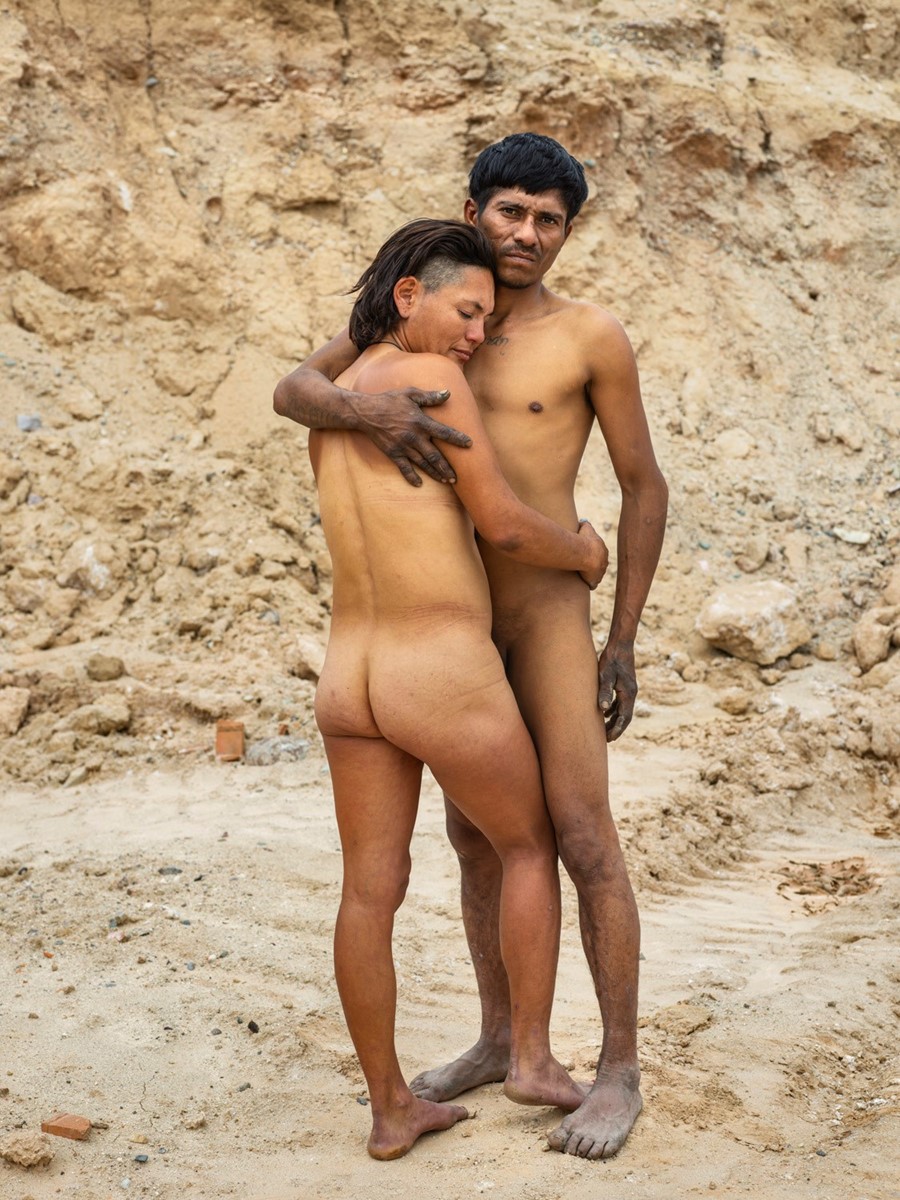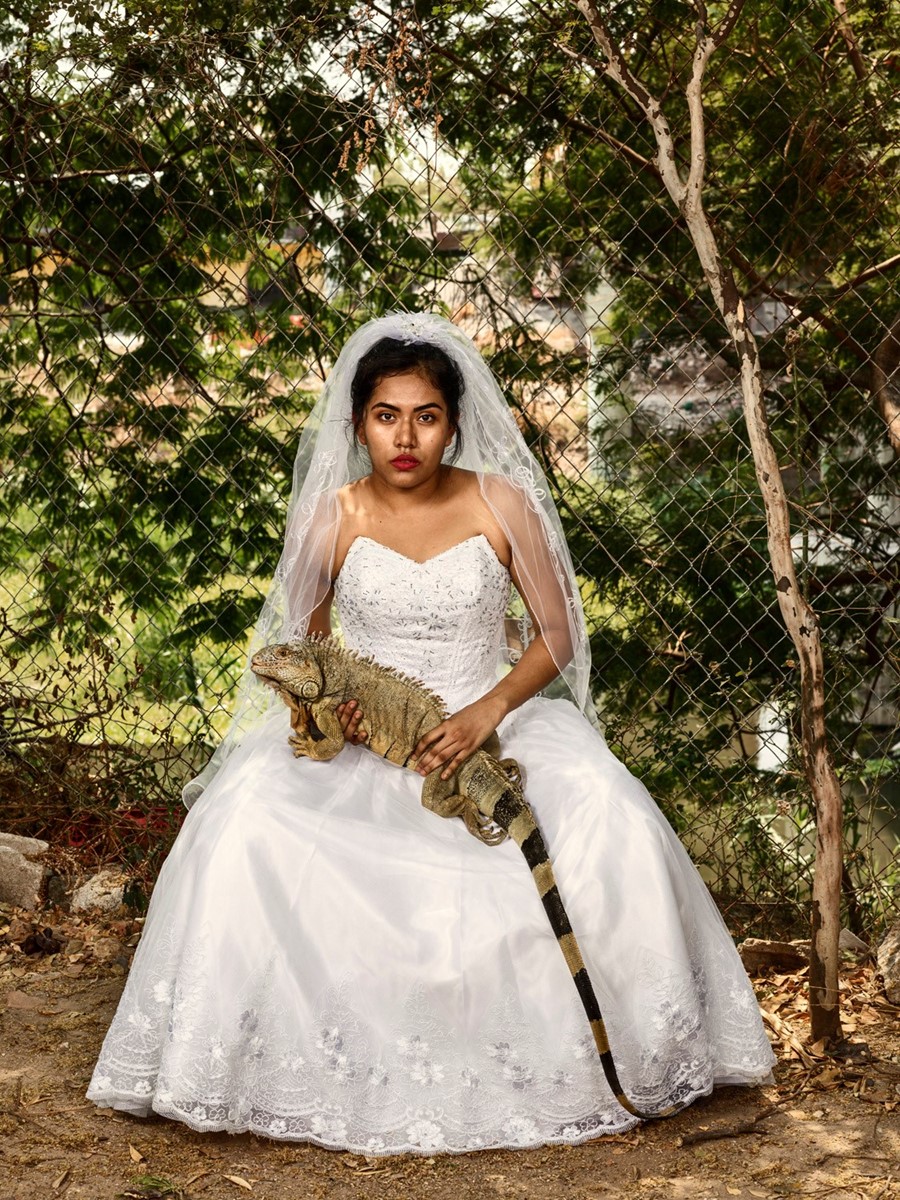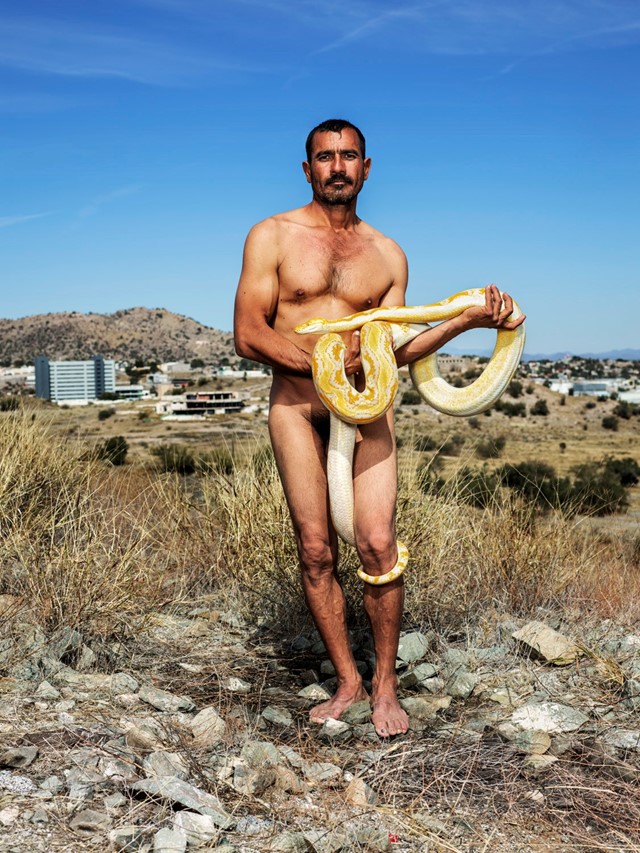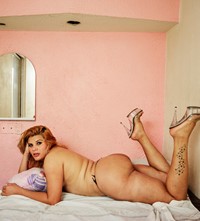Pieter Hugo’s New Series Explores Sex and Death in Mexico
- TextTed Stansfield
South African photographer Pieter Hugo discusses his new body of work ‘La Cucaracha’, which is currently on show at Priska Pasquer in Cologne
Pieter Hugo is one of the most prolific outsider photographers working today. Born and still based in South Africa, he has spent his photographic career documenting individuals and communities living on the fringes of society. Producing much of his work on the African continent, he has focused his lens on the film industry in Nigeria (Nollywood, 2009); a rubbish dump in Ghana (Permanent Error, 2011); sites of mass executions in Rwanda (Vestiges of a Genocide, 2011); his own family and friends in South Africa (There’s a Place in Hell for Me & My Friends, 2011, and Kin, 2015); male adult film stars and Gully Queens in Jamaica (PH&HBA, 2016); and, perhaps most famously, hyena handlers also in Nigeria (The hyena & other men, 2007). Hugo has contributed to Another Man too, shooting in Morocco and Ibiza with Another Man’s fashion director Ellie Grace Cumming.
This autumn, Hugo presents a new body of work titled La Cucaracha (‘The Cockroach’, which is a traditional Spanish folk song popular in Mexico), which explores ideas of sex and death in Mexico. Shot over a period of four trips, the series features a range of subjects – found through community theatre groups, Instagram and Grindr, among other places – and grapples with some of the contradictions that are present in modern-day Mexican life and culture, such as the gentleness of its people and the violence of its drug cartels. Raw, real, and profoundly beautiful, La Cucaracha was on show at Stevenson Gallery, Cape Town, and remains on display at Priska Pasquer, Cologne until November 23, 2019. Here, Hugo discusses the series in more detail.
Ted Stansfield: Can you tell us about this series?
Pieter Hugo: A couple of years ago, a curator from Mexico was putting together a big show of South African art in Oaxaca and invited me to come make work in dialogue with the exhibition. The exhibition was called Hacer Noche, which means ‘the crossing night’ and his only brief to me was that the work should be about sex and death. Which was great, because all work essentially deals with sex and death! I spent a month there making work. While I was there something shifted in my process; the way I make work, the way I look. It got its claws into me and I felt I needed to go back and continue the series. I went back four times and that’s where we are at now.
TS: What struck you about the country?
PH: Well it wasn’t so much about the country in this series. I don’t think the work needs to be read as a narrative – I’d prefer individual images that happen to be set in Mexico. Mexico has got this unique aesthetic and approach to mortality which I find very refreshing – there’s something celebratory in it. There’s also this acceptance that there’s more to life than what meets the eye. In the Trump/narco-state era, I’m curious about the normalisation of violence.
TS: Can you tell me about some of the people that you photographed, obviously it’s a very interesting mix. Do you have any particular favourites?
PH: I found a lot of the subjects through community theatre groups, photography schools, people on the sides of highways, friends of friends, Instagram, and Grindr. The pictures that I particularly like are ‘The Snake Charmer’, ‘The Lovers’, ‘The Advocate at Home’, ‘The Wedding Gift’, and ‘Black Friday’. This work really has a dialogue happening with visual history and literary history which has such close ties to magic realism but also with Mexican muralism. There’s a Mexican muralist movement which was a very socialist, almost bordering on communist, form of art. You would have large-scale historical narratives depicted in one artwork. Which is very close to documentary storytelling traditions.
TS: You’ve said that your work focuses on outsiders. What is that?
PH: I think a lot of that is a continuous search to situate myself and photography enables me to do that.


TS: Do you think Mexico, in terms of what’s going on politically at the moment, counts as an outsider?
PH: Yeah I do, in the Trump era it’s definitely the ‘other’. The border becomes a negotiated space. It is a space lacking clear boundaries – moral and physical. It is a space that is both used by opportunists and by the desperate.
TS: There’s a lot more nudity in this series than other series you’ve done. Obviously your brief was sex and death, but was there any other reason you decided to do this?
PH: I think it’s because I’m approaching my mid-forties and finally feel comfortable in my own skin. So for the first time I feel comfortable making nudes, because of that. At the same time, as an artist you pose yourself riddles that you try and solve. Of course the nude has a long and complicated history in artistry. It’s a challenge to make a nude that does not fall into the male erotic gaze or that cliché. I guess that’s a preoccupation and I wanted to investigate this.
TS: So how would you describe your approach to the nude?
PH: Fabulous and confrontational.

TS: They’re definitely not sexualised though.
PH: I’m not interested in particular in nudes that one might consider fashionable or erotic. I’m interested in people’s bodies and in how the environment shaped it. Whether it’s scars or sun-tan lines. Just that relationship between how we shape our environment and how the environment shapes us. I’m interested in how our history imposes itself physically upon us. That’s something that I find quite compelling and piques my curiosity.
TS: Other images are quite violent – one features a body that’s on fire, another features a severed head. I am assuming that head isn’t real...?
PH: It’s a prop from a movie set but then at the same time if you google ‘narco murders’ you’ll see a barrage of extremely violent images of decapitated humans and mutilated bodies. This of course comes back to Mexico’s relationship with its dead. It’s very hard to reconcile the gentleness of the people you meet in Mexico and with the reality of parts of the country that are ruled or governed by a narco state. At the same time I think photographers are attracted to detritus and death like flies to shit. That’s also something I’m thinking about and interested in...
TS: Have you come to any conclusions about why that is?
PH: I think everyone is attracted to it in some way. Look at what Hollywood puts out there – it’s all simulated sex and violence. When we drive past a terrible car accident we can’t stop ourselves from looking...
La Cucaracha by Pieter Hugo is on show at Priska Pasquer, Cologne until November 23, 2019.
















